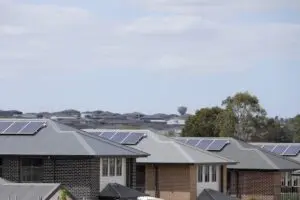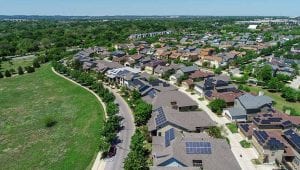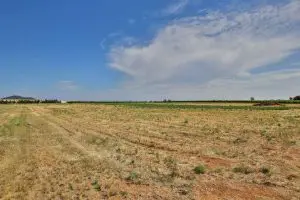Genesis Energy is planning to become the solar powerhouse with three new projects that it hopes to bring online from 2026.
The company says it has picked three sites in the Manawatu, Waikato and Hawke’s Bay regions, all in the North Island, to install up to 400 megawatts (MW) of solar capacity.
The pot price is estimated to be around $NZ600 million ($555 million) and if the proposed sites tick regulatory boxes and investment timelines, the first could be generating electricity by 2026.
Genesis, the largest electricity and natural gas retailer in NZ and 51 per cent owned by the government, has a target of 500 MW of solar by 2026.
It picked FRV Australia, owned by Saudi Arabia’s Abdul Latif Jameel Energy, to develop that pipeline in 2021.
The power company and FRV bought the “fully consented” 52 MW Lauriston solar farm development from UK-based Hive Energy in February, with a final investment decision due for the project later this year.
New Zealand’s shift to solar
Solar is a hot topic in New Zealand as electricity demand begins to ramp up.
In 2020, energy regulator Transpower forecast demand growth of 60-80 per cent by 2050, which averages out to 2-2.7 per cent every year.
To meet this, New Zealand will need to grow its generation base to 13.1 gigawatts (GW) by 2030 using 4.4 GW of new utility-scale wind and solar, according to a report by consultant Boston Consulting Group.
That will need to rise to 22.7 GW in 2050, with 12.6 GW of new wind and solar and 2.5 GW of storage.
Interest in solar has picked up strongly on the back of those forecasts.
Transpower says three quarters of applications in its pipeline are for photovoltaics projects, some 66 proposals.
Solar is cheap and faster to install than New Zealand’s current suite of renewable options which is why it’s having its time in the sun now, as the realities of rising electric vehicle (EV) use and corporate demand put pressure on existing supply, says Craig Brown, who leads Genesis’ solar program.
“Electric vehicles will definitely contribute to demand growth but there’s also a lot of manufacturing process heat decarbonisation work that’s contributing to demand growth forecasts,” Brown told RenewEconomy.
“On paper, New Zealand has enough renewable sources and projects to meet demand growth. The key question will be how it will take us to convert those into operations and how many of those projects will get through.”
Rush to solar
Currently, the biggest working solar farm in New Zealand is the 2.1 MW Kapuni plant in Taranaki, operated by Nova Energy.
Nova is also working on plans to establish a 400 MW photovoltaic project on the North Island, and Contact Energy is developing its own large-scale solar portfolio in partnership with Lightsource bp.
Local developer Lodestone Energy started construction on the 39.4MW Kaitaia solar farm in December, in the far north of the North Island.
Other projects include UK developer Island Green Power’s 130 MW Rangiriri solar farm and 180 MW Waerenga solar farm in Waikato, and the 147 MW Tauhei solar farm, also in Waikato, by UK developer Harmony Energy.
Matching winter hydro with summer solar
Currently renewable energy sources supply between 82 per cent and 87 per cent of the nation’s power supply, according to the Electricity Authority.
Hydropower supplies the majority of the nation’s electricity at 57 per cent, geothermal about 21 per cent, and wind between 4-6 per cent.
It is that large share of hydro that requires extra support from seasonal power supplies.
Solar is most effective during a New Zealand summer which is when hydropower generation is lowest, when water levels are low and planned maintenance causes outages, says Brown.
“On paper they look quite compatible, solar and hydro,” he says.
The flexible use of hydro once more wind and solar enter the grid will be interesting to watch, he says, as it could be used more for peaking rather than baseload power.
Genesis also has a fossil problem: it owns the Huntly thermal power station which combines three 250MW coal-and-gas-fired steam turbine units, a 50MW gas peaking plant, and a 403MW combined cycle gas turbine plant.
Brown says the company needs to not only keep up with demand growth, but also displace 2650 gigawatt hours (GWh) of coal and gas power.










